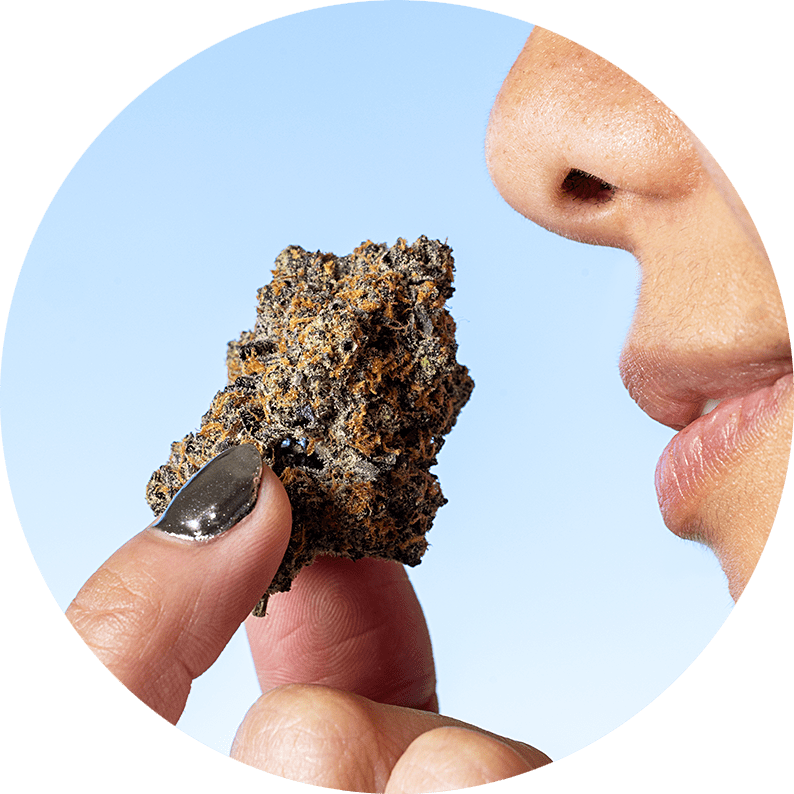Q&A with Confidence Analytics
During the month of February, we at Dockside focus on cultivating a deeper connection with the plant we all love. We interviewed Bobby from Confidence Analytics to delve deep into the sensory aspects of enjoying cannabis:
Q: How can individuals enhance their experience of cannabis aromatics?
A: If you’re going to do one thing, begin enhancing your experience with all aromatics. Engage mindfully with the molecules around you every day. Smell everything. Before you eat, smell the food with your eyes open, and again with your eyes closed. When you see a flower while out on a walk, do the same. Gain a practice of indulging in the chemistry offered around you. With such a practice, we intuitively approach the aromatics of cannabis with an attitude of exploration and discovery.
Q: Are there specific strains that stand out in terms of unique and appealing aromas?
A: De gustibus non est disputandum. Translated: In matters of taste, there can be no disputes.
I can tell you only examples of my own preference. What is great about legal Cannabis, is each producer’s ability to provide great variety. The same seeds can produce very different expressions when raised in different growing environments and with different inputs. You may have already experienced a situation in which the same strain name from two different producers smelled and tasted quite differently. Whether you prefer fruity aromas, or skunky ones, there are “unique and appealing”
Q: Can you share insights on the importance of terpenes in influencing the aroma of cannabis?

A: Terpenes contribute some of the most prominent scent and flavor notes found in cannabis, but they aren’t the only things influencing the aroma of cannabis. Some other notable aromatic compounds naturally found in cannabis include flavonoids, esters, ketones, alcohols, and volatile sulfur compounds, to name a few. However, with no clear standardized testing methods for many of these compounds and a lack of research into how specifically they influence the flavor, it is unclear if there will be demand to test for these compounds in the future. What we do know is that terpenes show up in high and measurable amounts in cannabis and, therefore, are an important component to consider in terms of their influence on the aroma of cannabis.
Q: How do different methods of inhalation affect the way individuals perceive aroma and flavor?
A: Scientifically, there are two ways to “smell” an aroma: orthonasal olfaction (a smell that comes into the nose through the nostrils), and retronasal olfaction (a smell that comes from the back of the throat). By inhaling through the nose and mouth simultaneously, allowing air to pass over the palette as well as in through the nose, more opportunities are provided for the molecules comprising the aroma to latch on to olfactory receptors. Naturally, along the route through the mouth, that same aroma travels over your taste buds, binding to taste receptors. Together, these two senses perceive “flavor.” “Taste” is about gustation (distinguishing sweet, sour, bitter, and salty properties in the mouth) while “flavor” is a complex blend of taste, smell, texture, etc. While tasting and smelling as isolated acts provide input, a flavor is acquired only by allowing the senses to mingle.
Q: In what ways can touch and temperature influence the cannabis experience?
A: Touch can be an overlooked part of experiencing Cannabis. Consider the way we use touch to select other consumables. We determine quality and state of ripeness by squeezing our avocados for firmness (whether that really works or not), our berries for plumpness, our cabbage for density, etc. We touch in order to detect what we expect to be there (like symmetry, or particular textures), as well as to detect what should not be there (like asymmetry, or imperfections in those textures).
In Cannabis, we each seek out our preferential quality metrics. Whether you’ve noticed or not, you probably prefer a different moisture content in flower for a bong, versus rolling a joint. Without conducting a moisture analysis in a laboratory setting, how do you tell? I’ll bet you give that flower material a squeeze. You can feel moisture content, material density, trichome density, etc. with just your sense of touch. Our advice here is much the same as our advice for enhancing your experience with cannabis aromatics: engage in the practice mindfully. Reflect on your habits, and consider what your sense of touch is telling you when you handle cannabis products.
Temperature plays a vital role in product presentation and, consequently, our perception of that product. The organic compounds from which we perceive aromas are tiny physical structures that are released into the air both over time as the material dehydrates, and at various boiling points, some of which are near common room temperature. As cannabis material is heated, the temperature moves through the boiling points of many terpenes, esthers, flavonoids, sulfurics, and other volatile organic compounds. Keeping cannabis products in temperature controlled storage can reduce the loss of these compounds. High terpene concentrates certainly fare better when refrigerated.
Q: Are there recommended methods for warming up cannabis products to optimize the sensory experience? And can you elaborate on the impact of heat on the release of terpenes and cannabinoids?
A: When it comes to warming products, let’s use terpenes in flower products as an example. You can roughly divide terpenes into two general physical classes: small more highly volatile molecules we’ll call short chains, and bigger less volatile molecules we’ll call long chains. The short chains become volatile at lower temperatures. They dissipate to the atmosphere quickly, and dominate the initial mix of compounds. Once those have mostly gone, what remains are those more temperature tolerant and desiccation resistant. Increasing the product temperature even modestly can help lift those less volatile molecules into the air where you can inhale them. The simplest method for doing this, is to compress the material firmly in your hand for a minute or so, and allow your body to heat it. If you’re careful, you can smell from your hand as though from a freshly opened container.
Q: Are there personalized approaches to appreciating cannabis that you’ve observed to be particularly effective?
A: My mantra is, “Enjoy the ritual.” I absolutely believe in the legitimacy of a casual puff on a joint with friends before popping into the concert. With that said, if you really want to maximize the Cannabis experience, and discover all the things it has to offer, you have to take a mindful and intentional approach to consumption. Create the proper set and setting for evaluating products. Make time free of interruptions. Relax and be excited for what you are about to experience. A dedicated notebook for recording your experiences can be both useful in determining your own preferences, and a rewarding record of your tasting journey.
You might be interested in: Why It’s a Good Idea to Keep a Strain Diary
Q: Can you provide guidance on experimenting with different sensory aspects to find what works best for each individual?
A: Absolutely! For the enthusiastic consumer, consume the product with all your senses! Feast first with your eyes and note your observations: size, shape, color? Don’t be afraid to look inside with a magnifier or even your cell phone camera. Next, handle it with your hands: density, dryness, texture? When you go in for a smell, bring that aroma in through your nose and mouth to really access flavor. After it’s been exposed to the air for a few minutes, try warming it in your hand and smelling it again. Keep notes to and read them later to see a picture of your preferences.
For industry professionals, we highly recommend utilizing our Sinsemillist™ tasting framework. Training and materials are available at the Strain Data Project.
